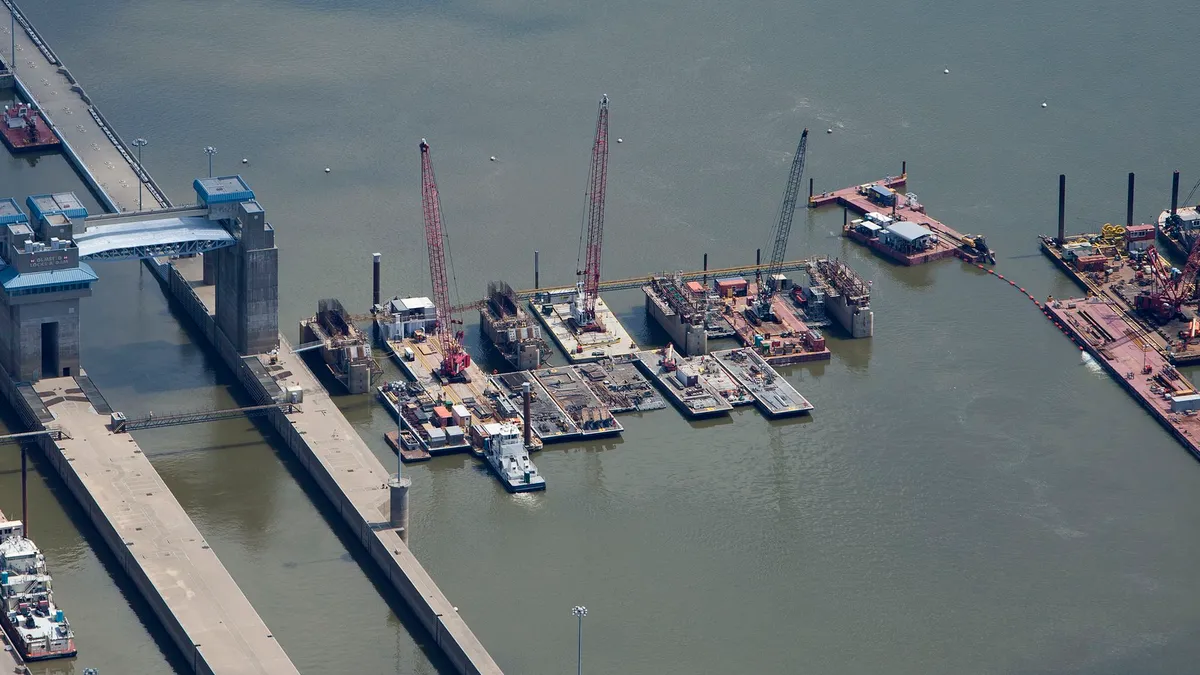Dive Brief:
- The funding and scheduling delays for retiring Dam and Locks 52 and 53 along the Ohio River has cost shippers millions in time and money lost as gridlock is rampant in the inland waterway. The waterway infrastructure is currently 20 years and $1.125 billion over budget.
- As the busiest hub within America's waterways, more than 80 million tons of cargo, worth over $22 billion dollars, pass through Dam and Lock 52, where water traffic from the east bypasses that from the Gulf and the Mississippi.
- Extended delays keep cargo from reaching its destination on the supply chain, potentially driving consumer prices sky high.
Dive Insight:
It comes as no surprise to many Americans that improvements to our failing infrastructure are desperately needed. In fact, the matter was even addressed by our contentious candidates during recent debates, with President-elect Trump promising $1 trillion dollars in infrastructure support.
A focus on expansion rather than maintenance is the driving force behind our failing system. Over-investment in highways at a federal level versus a policy of maintenance at a state or local level has long been seen as the path to growth. However, with exterior growth has come internal decrepitude, as highways grow more complex while local roads, bridges, waterways and transit systems sink in quality and access.
Today's supply chain is most in need of a strong multimodal freight network in order to move goods easily and quickly. Relying on one method of transport creates strain and crowding. Rethinking our traditional methods of transport may be the best way to preserve our roads, bridges, and ports once we finally manage to update each.














